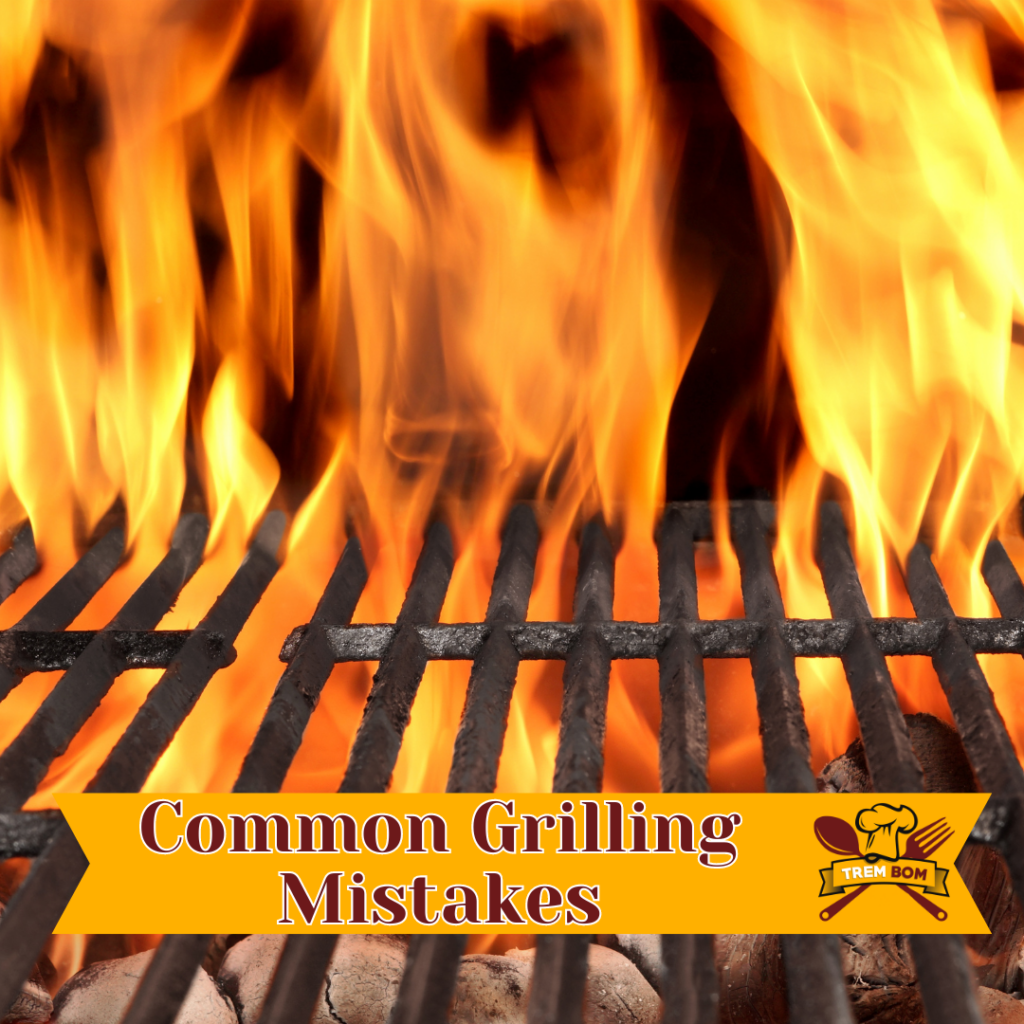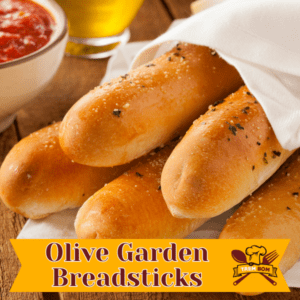
Grilling is a beloved pastime for many, but even the most experienced grillers can make mistakes. Whether you’re new to grilling or a seasoned pro, it’s important to understand common grilling mistakes and how to avoid them to make the most out of your next outdoor cooking experience.
In this guide, we’ll provide you with tips and techniques to help you avoid common mistakes, from controlling heat to properly cooking different types of meat. Let’s get started!
Key Takeaways:
- Knowing common grilling mistakes can help you avoid them and improve your outdoor cooking skills.
- Controlling heat and properly cooking different types of meat are two essential skills for successful grilling.
- Cleaning and maintaining your grill is crucial to preventing off-flavors and ensuring a clean cooking surface.
- Expert advice and insights from professional chefs can offer valuable tips and tricks to elevate your grilling game.
- With the right techniques and knowledge, you can maximize flavor and enjoy the ultimate grilling experience.
Types of Grills and Their Impact on Cooking
One of the most important aspects of successful grilling is understanding the type of grill you are using. Two of the most common types of grills are gas and charcoal grills, each with their own unique features and benefits. Knowing how to use each type of grill effectively can have a significant impact on the quality of your grilled meats and other dishes.
Gas Grills
Gas grills are fueled by propane or natural gas and offer the convenience of easy ignition and temperature control with the turn of a knob. They are often more expensive than charcoal grills but are easier to use and maintain. Gas grills are ideal for those who want the convenience of quick heating and precise temperature control.
To control the heat on a gas grill, simply turn the knobs to adjust the temperature. You can also use the grill’s lid and vents to regulate the airflow and temperature of the grill for different cooking styles.
Charcoal Grills
Charcoal grills use charcoal to heat the grill and impart a smoky flavor to your food. They can be less expensive than gas grills but require more effort to set up and maintain. Charcoal grills take longer to heat up and require more careful attention to achieve the desired temperature.
To control the heat on a charcoal grill, you must manage the amount of charcoal and the placement of the food over the coals. You can use the grill’s lid and vents to regulate the airflow and temperature of the grill for different cooking styles.
Heat Control
Regardless of the type of grill you’re using, controlling the heat is critical to achieving the desired flavor and texture of your grilled dishes. Each type of grill has its own unique heat control methods, and it’s essential to understand how to use them to avoid overcooking or undercooking your food.
With gas grills, you can easily adjust the temperature by turning the knobs and using the grill’s lid and vents to regulate the airflow and temperature. With charcoal grills, you must manage the amount of charcoal and the placement of the food over the coals. You should also pay attention to the grill’s lid and vents to regulate the airflow and temperature of the grill.
| Type of Grill | Pros | Cons |
|---|---|---|
| Gas Grill | Easy to use and maintain, quick heating, precise temperature control | More expensive, may not impart a smoky flavor to food |
| Charcoal Grill | Inexpensive, imparts a smoky flavor to food, versatile for different cooking styles | More effort to set up and maintain, takes longer to heat up, difficult to control temperature |
Preparing the Grill for Cooking
Before you start grilling, it’s important to properly prepare your grill to ensure a clean and evenly heated cooking surface. These simple steps will help you get started:
Preheat the Grill
Preheating your grill is essential to ensuring an even cooking temperature. Turn on your gas grill or light your charcoal, and wait for it to heat up to your desired temperature. For best results, preheat your grill for 10-15 minutes before adding food.
Clean Your Grill Grates
Clean grill grates prevent food from sticking and ensures even cooking. Use a grill brush to remove any stuck-on debris or grease from the grates before preheating your grill. For a deeper clean, soak your grates in soapy water and scrub with a brush. Rinse thoroughly and dry before using.
Light Charcoal Using a Chimney Starter
If using a charcoal grill, consider using a chimney starter to evenly light your charcoal without the use of lighter fluid. Fill the chimney starter with charcoal and place it over your grill’s bottom grate. Light the newspaper or kindling at the bottom of the chimney starter and let the charcoal heat until it’s covered with gray ash. Then, carefully pour the charcoal onto your grill and add your food.
By following these simple steps, you’ll be well on your way to a successful grilling experience. Remember, proper preparation and preheating are key to achieving the perfect grill marks and maximizing flavor.
Controlling Heat and Avoiding Flare-ups
One of the most common grilling mistakes is the inability to control heat, causing flare-ups and overcooking. To avoid this, it’s important to understand how to manage the heat on your grill.
Controlling the temperature of your grill involves adjusting the vents and knowing when to use direct and indirect heat. Direct heat is best for quick-cooking foods, such as burgers and hot dogs. However, for thicker cuts of meat, you’ll want to use indirect heat to prevent burning the exterior and undercooking the center.
Another issue that can cause flare-ups is a dirty grill. Grease buildup can ignite and create flames, so it’s important to clean your grill grates before each use. You can also use a drip pan to catch excess grease and prevent flare-ups.
Lastly, it’s important to avoid constantly flipping your food. Flipping too often or pressing down on your food with a spatula can cause flare-ups and release juices, leading to dry meat. Instead, let your food cook on one side until it forms a crust before flipping it.
Properly Cooking Different Types of Meat
Grilling meat can be intimidating, especially when dealing with different cuts and types. Here are some tips to help you cook steak, pork chops, chicken, and brisket to perfection:
Steak
For a juicy and flavorful steak, sear it on high heat for a few minutes on each side to create a crust, then move it to indirect heat and continue cooking until it reaches your desired internal temperature. Use a meat thermometer to ensure it’s cooked to your liking, with rare being about 125°F, medium-rare at 135°F, medium at 145°F, and well-done at 160°F.
Pork Chops
Cooking pork chops on the grill is all about timing. Grill them over high heat for about 3-4 minutes per side, then move them to indirect heat until they reach an internal temperature of 145°F. Let them rest for a few minutes before serving to lock in the juices.
Chicken
Cooking chicken on the grill requires patience and attention. Start by searing the chicken over high heat for a few minutes on each side to create grill marks, then move it to indirect heat and continue cooking until it reaches an internal temperature of 165°F. This may take up to 20 minutes depending on the size and thickness of the chicken.
Brisket
Brisket is a low and slow cut of meat, meaning it needs to be cooked over indirect heat for several hours to become tender. Before placing it on the grill, season it with a dry rub and let it sit in the fridge overnight. Cook it for about 8-10 hours until it reaches an internal temperature of 200°F for the perfect melt-in-your-mouth brisket.
Remember, using indirect heat for certain cuts of meat can help prevent overcooking and ensure that the inside is cooked properly. Always use a meat thermometer to check internal temperature rather than relying solely on visual cues or timing.
Enhancing Flavor and Avoiding Pitfalls
Grilling is all about flavor, and there are a few techniques you can use to enhance it. One of the most desirable marks on grilled food is the charred grill marks. Achieving perfect grill marks is easy. Start by preheating the grill to high heat and then oiling the grates. Place the food diagonally across the grill grates and cook for a few minutes before rotating the food 90 degrees to create crosshatch marks.
Barbecue sauces can also add flavor to your grilled food. However, it’s essential to apply the sauce at the right time. Applying it too early can cause the sauce to burn, making the food taste bitter. Add the sauce during the last few minutes of cooking, and then let it caramelize on the grill for a few seconds. This will create a delicious glaze without burning the sauce.
Resting meat before serving is another essential technique to ensure that your grilled food is flavorful and tender. When meat is cooked, the juices inside are redistributed and settle on the surface. If you cut the meat immediately, the juices will escape, and the meat will be dry. Letting the meat rest for a few minutes allows the juices to redistribute throughout the meat, making the meat juicier and more flavorful.
While grilling is a fantastic cooking method, it can sometimes result in off-flavors in the food. One of the reasons for this is the chemical bond between the food and the grill grates. When the food is grilled, it forms a chemical bond with the grill grates, making it challenging to remove the food. To prevent this, oil the grates before grilling or brush the food with oil before placing it on the grill. This will help create a barrier between the food and the grates, preventing the formation of a strong chemical bond and making it easier to remove the food from the grates without leaving any residue behind.
Tips for Grilling Side Dishes and Vegetables
Grilling isn’t just for meat! Side dishes and vegetables can be deliciously grilled too. However, grilling these foods requires a little bit of extra care and attention to ensure they are cooked properly. Here are some tips to help you grill the perfect side dishes and vegetables:
Adjusting Heat
Side dishes and vegetables require a lower heat than most meats, so it’s important to adjust the heat on your grill accordingly. If you’re using a gas grill, turn the burner to medium or low heat. If you’re using a charcoal grill, move the coals to one side of the grill to create indirect heat. This will prevent your food from burning or cooking too quickly.
Using Indirect Heat
Indirect heat is also a great option for grilling side dishes and vegetables. This method involves placing the food on the cooler side of the grill, away from the direct heat source. This allows the food to cook more slowly and evenly, resulting in a deliciously grilled side dish or vegetable.
Choosing the Right Vegetables
Not all vegetables are created equal when it comes to grilling. Vegetables like bell peppers, onions, zucchini, corn on the cob, and eggplant are great for grilling. They hold up well on the grill and take on delicious smoky flavors. However, vegetables like broccoli and asparagus can be trickier to grill, as they are more delicate and can easily burn.
Prepping the Vegetables
Before grilling, make sure to properly prep your vegetables. Cut them into uniform sizes to ensure even cooking. Brush them with olive oil to prevent sticking and add flavor. You can also season them with your favorite herbs and spices. Remember, a little bit goes a long way.
Grilling Side Dishes
Side dishes like grilled potatoes, corn on the cob, and even pizza can be grilled to delicious perfection. For potatoes, slice them thinly and grill them on medium heat until crispy and golden brown. For corn on the cob, soak them in water for 30 minutes before grilling to prevent burning. For pizza, brush the pizza dough with olive oil and grill for a crispy, smoky crust.
With these tips and techniques, you’ll be able to grill the perfect side dish or vegetable to complement your grilled meats. Don’t be afraid to try new things and experiment with different flavors and seasonings. Happy grilling!
Cleaning and Maintaining Your Grill
Regular cleaning and maintenance of your grill is essential to ensure the longevity of your grill and to prevent any harmful substances from contaminating your food. Here are some tips to keep your grill clean and well-maintained:
Clean the grill grates
After each use, use a wire brush to scrape off any food particles or debris on the grill grates. This prevents the buildup of grease and food residue, which can affect the flavor of your food and even cause flare-ups during grilling.
| Tools Needed: | Wire brush, mild dish soap, sponge, and water |
|---|---|
| Steps: | Preheat the grill for about 15 minutes to loosen any food particles. Turn off the heat and use a wire brush to scrape off any food particles. Use a sponge with mild dish soap and water to clean the grates thoroughly. Rinse the grates with water and let them air dry. |
Remove grease buildup
Grease buildup can also affect the flavor of your food and can even cause fires. Here’s how to remove it:
| Tools Needed: | Bristle brush, scraper, clean cloth, and warm soapy water |
|---|---|
| Steps: | Remove the grates and the metal plates covering the burners. Scrape off any visible grease using a scraper or bristle brush. Use warm soapy water and a clean cloth to wipe down the surfaces. Rinse with water and let them air dry before reassembling. |
Properly oil the grill grates
After cleaning the grill grates and removing grease buildup, it’s important to properly oil them to prevent food from sticking:
| Tools Needed: | Oil, brush, and paper towel |
|---|---|
| Steps: | Use a brush or paper towel to coat the grill grates with oil. Preheat the grill for 15 minutes to help the oil adhere to the grates. Turn off the heat and let the grates cool before grilling. |
By following these cleaning and maintenance tips, you can enjoy better-tasting food and prolong the life of your grill. Don’t let a dirty and poorly maintained grill ruin your outdoor cooking experience.
Grilling Mistakes: Chefs Share Their Insights
Learning from the experiences of professional chefs can be valuable in improving your grilling skills. We reached out to some chefs and asked them to share their insights on common grilling mistakes and how to avoid them. Here are some of their tips and tricks:
“One of the biggest mistakes I see people make when grilling is not allowing the grill to preheat long enough. It’s important to give the grill enough time to get hot to ensure proper cooking temperature.”
– Chef John Doe, Executive Chef at XYZ Restaurant
As mentioned earlier, preheating the grill is crucial for achieving perfect grill marks and ensuring even cooking. A good rule of thumb is to preheat the grill for at least 10-15 minutes before adding any food.
“Another common mistake is not cleaning the grill grates properly. A dirty grill can not only affect the flavor of your food but can also lead to flare-ups.”
– Chef Jane Smith, Owner of BBQ Shack
Cleaning the grill grates after every use is essential for maintaining a clean and healthy grill. Use a grill brush to scrape off any leftover food debris and grease, then wipe the grates with a damp cloth or paper towel.
“Using the wrong cooking method for certain cuts of meat is a common mistake. For example, grilling a thick steak over direct heat can result in a charred exterior and an undercooked interior.”
– Chef Mark Johnson, Head Grill Master at ABC BBQ
Understanding the right cooking method for different types of meat is crucial for achieving the desired texture and flavor. For thicker cuts of meat, such as pork chops and brisket, use indirect heat to ensure even cooking. Use a meat thermometer to monitor the internal temperature and ensure proper doneness.
“One of the biggest mistakes people make when grilling vegetables is not using enough oil. Without enough oil, the veggies can dry out and stick to the grill.”
– Chef Sarah Lee, Owner of Veggie Grill
Coating vegetables with oil before grilling can help prevent them from sticking and add extra flavor. Use a brush to apply oil evenly to the veggies before placing them on the grill.
By following these tips and tricks from professional chefs, you can avoid common grilling mistakes and elevate your outdoor cooking game. Happy grilling!
Conclusion
Grilling can be a fun and rewarding outdoor cooking experience, but it’s important to avoid common mistakes to maximize flavor and elevate your skills. By understanding the types of grills and their impact on cooking, preparing your grill properly, controlling heat and avoiding flare-ups, properly cooking different types of meat, and enhancing flavor while avoiding pitfalls, you can become a better griller.
Don’t forget to apply tips from professional chefs, as they provide valuable insights into avoiding grilling mistakes. Lastly, regular cleaning and maintenance of your grill can help prevent future issues. So, the next time you fire up the grill, keep these tips in mind and elevate your outdoor cooking game. Happy grilling!
SEO relevant keywords: grilling mistakes, elevate outdoor cooking, maximize flavor.
FAQ
What are some common grilling mistakes to avoid?
Some common grilling mistakes to avoid include not preheating the grill, using too much direct heat, not properly cleaning the grill grates, and overcrowding the grill.
How can I prevent flare-ups while grilling?
To prevent flare-ups while grilling, make sure to trim excess fat from meat, keep a spray bottle of water nearby to quickly extinguish any flare-ups, and use indirect heat cooking methods for fatty meats.
What is the best way to cook different types of meat on the grill?
The best way to cook different types of meat on the grill varies. For example, steak is often best cooked using direct high heat, while chicken benefits from a combination of direct and indirect heat. Use a meat thermometer to ensure desired doneness.
How should I clean and maintain my grill?
To clean and maintain your grill, make sure to regularly scrape and clean the grill grates, remove any grease or residue, and oil the grates before and after each use. It’s also important to store your grill in a clean and dry area.
What are some tips for grilling side dishes and vegetables?
When grilling side dishes and vegetables, consider using indirect heat or a grill basket to prevent burning. Season them with herbs and spices, and don’t forget to flip them frequently for even cooking.






